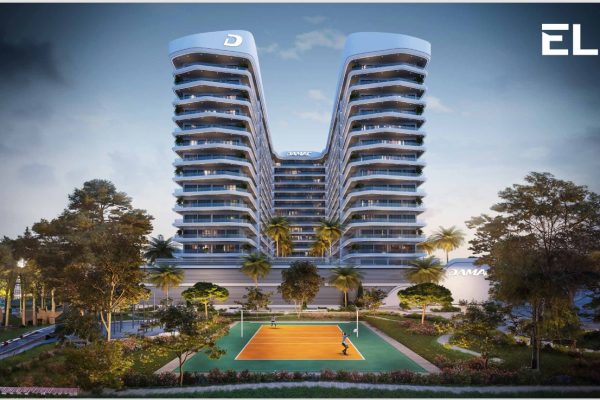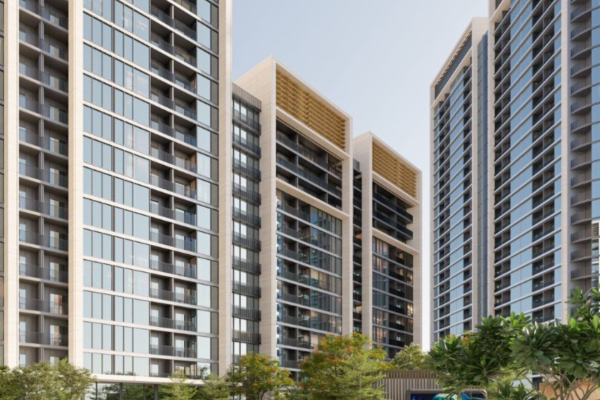The landscape of the Middle East and North Africa (MENA) region is set to be transformed by an ambitious wave of infrastructure construction projects in 2024. This significant surge is not only a testament to the region’s growing economic prowess but also marks a pivotal shift towards enhancing social infrastructure, transportation infrastructure, and the overall real estate sector. Key countries such as Saudi Arabia, the United Arab Emirates (UAE), and Egypt are at the forefront of this boom, fueled by strategic foreign investment, robust project financing mechanisms, and an increasingly sophisticated project pipeline that includes giga projects and a myriad of real estate developments. This initiative reflects the region’s dedication to building a future-ready landscape, harnessing the strengths of contractors, developers, consultants, and government entities working in tandem to reshape the MENA skyline.
As this article delves into the nitty-gritty of the MENA infrastructure construction landscape for 2024, readers can expect a comprehensive overview that spans across major projects in various countries within the GCC and beyond. From groundbreaking developments in Saudi Arabia to transformative projects in the UAE and Egypt, this narrative will explore the gamut of efforts being made to enhance the region’s infrastructure. Key discussions will also encompass emerging trends and technologies that are setting new standards for infrastructure construction, alongside insights into the role of developers, contractors, and consultants in bringing these ambitious projects to fruition. By illustrating the intricate ecosystem of real estate development, social infrastructure advancements, and strategic project financing, this article aims to provide a detailed snapshot of what the future holds for infrastructure projects in the vibrant MENA region.
MENA Construction Market Overview
Current Landscape
The MENA region’s construction market is witnessing a robust phase of growth, underscored by a significant increase in project pipelines and investment, particularly in Saudi Arabia and the UAE. The total value of projects across MENA has surged to an estimated USD 3.7 trillion, with the GCC contributing over 84% of this market value. This expansion is largely driven by substantial investments in transportation infrastructure and the development of real estate, including vital social infrastructure like schools and hospitals.
Key Drivers
Several factors are propelling the MENA construction market forward. The region is keen on diversifying its economy to reduce dependence on oil, driven by the need to accommodate a rapidly growing population. Visionary initiatives like Saudi Arabia’s Vision 2030 and significant increases in project awards, which have seen a record-setting rise in 2023, are pivotal. For instance, the UAE reported a 232% increase in project awards compared to the previous year, while Saudi Arabia saw a 94% increase, showcasing a strong market recovery and growth.
Challenges and Opportunities
Despite the booming market, the MENA region faces challenges such as cost inflation, logistical bottlenecks, and labor shortages which could impact project timelines and budgets. However, these challenges also present opportunities for innovation and improvement. The adoption of new procurement models like early contractor involvement (ECI) and FEED+EPC competitions is helping to attract international contractors and manage complex project demands. Additionally, the introduction of more flexible contractual terms is becoming a strategy to mitigate risks associated with project delays and cost overruns.
Major Projects Across Various Countries
Saudi Arabia
Saudi Arabia continues to lead in ambitious infrastructure projects, notably with its Vision 2030 initiatives. NEOM, the futuristic mega-city, is a highlight with an estimated value of USD 500 billion, aiming to host over a million residents. The Red Sea Project and AMAALA are set to redefine luxury tourism with extensive accommodations and zero-carbon footprint goals. Additionally, the Riyadh Metro, set to be the world’s largest public transport network upon completion, exemplifies the scale of infrastructure development in the kingdom.
United Arab Emirates
The UAE is enhancing its global stature with projects like the NEOM Project and the Dubai Creek Tower, aiming to surpass the Burj Khalifa. The nation’s focus on luxury and innovation is evident in developments such as Marsa Al Arab and the Ciel Tower, projected to be the world’s tallest hotel. The Etihad Rail network, completed recently, further underscores the UAE’s commitment to expanding its infrastructure to improve connectivity and economic integration within the region.
Egypt
Egypt’s infrastructure landscape is bustling with activity, driven by significant investments in transportation and renewable energy. The government’s commitment is demonstrated by the high-speed train project awarded to Siemens, valued at USD 8.7 billion, and the construction of new smart cities. The New Urban Communities Authority (NUCA) is at the forefront, planning integrated cities with comprehensive services, enhancing the nation’s urban framework.
Other MENA Countries
Across the broader MENA region, infrastructure projects are robust, with a focus on diversifying economies and enhancing public services. Notable projects include the expansion of educational and healthcare facilities, reflecting a significant increase in capital expenditures in sectors critical for socio-economic development. These projects not only aim to improve the quality of life but also stimulate economic growth through enhanced infrastructure and investment opportunities.
Emerging Trends and Technologies
Sustainability Initiatives
In the realm of infrastructure construction, sustainability is becoming a pivotal focus. Stringent regulations aimed at reducing carbon emissions are shaping the industry, with companies increasingly required to report accurately on energy use and waste management. The adoption of circular economy models is accelerating, as businesses seek to reduce waste, reuse resources, and create sustainable products. This shift is supported by technological innovations in renewable energy and energy storage, enhancing sustainability across traditionally conservative sectors.
New Construction Techniques
The adoption of modular construction is gaining traction, particularly suited to the Middle East’s extensive greenfield projects. This technique can significantly reduce labor and material costs by 20% and shorten construction timelines by 20 to 50%. However, its implementation remains below 10% in many global markets, with exceptions like Singapore and Sweden where it exceeds 30% in residential development. In contrast, the use of 3D printing in construction has been more cautious, employed as a specialized tool rather than for mass deployment, mainly due to regulatory constraints and industry readiness.
Technology Integration
The integration of advanced technologies is reshaping the MENA construction landscape. Blockchain technology, though still underutilized, holds potential for revolutionizing contract management and addressing long-standing issues like contract disputes and payment delays. Similarly, the emergence of Generative AI (GenAI) is seen as a catalyst for enhancing operational efficiencies, though its full potential is yet to be realized in the region. The Pro AV & Integrated Solutions sector is also witnessing significant growth, driven by digital interaction innovations that are transforming architectural design and property management.
Through this comprehensive exploration of the MENA region’s infrastructure construction projects set for 2024, we’ve looked into a future where economies are diversifying, societies are advancing, and technologies are innovating at an unprecedented scale. The burgeoning surge in construction activities across key countries such as Saudi Arabia, the UAE, and Egypt underscores a significant evolution in the region’s landscape—one that is not only aimed at enhancing infrastructural capacities but also at fostering sustainable development and economic diversification. This narrative has encapsulated the intricate dynamics of strategic investments, emerging trends, and the challenges faced, offering insights into the ambitious endeavors reshaping the MENA infrastructure.
The profound implications of these developments extend far beyond the immediate landscape of construction sites, promising to elevate the region’s global stature, stimulate its economies, and improve the quality of life for its people. As the MENA region strides into 2024, the fusion of visionary projects and innovative technologies sets a remarkable precedent for the future of infrastructure development. The momentum gathered here suggests a robust pathway forward, albeit with an acknowledgement of the challenges that lie ahead. In essence, the unfolding story of MENA’s infrastructure construction projects is a compelling testament to the region’s resilience, ambition, and the collective drive towards crafting a future marked by prosperity and sustainability.









